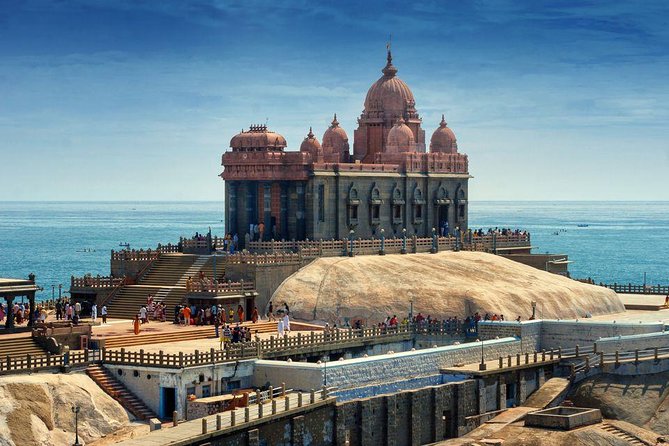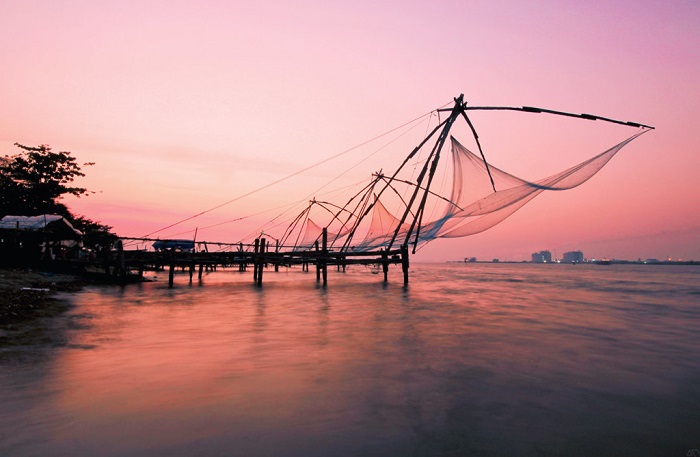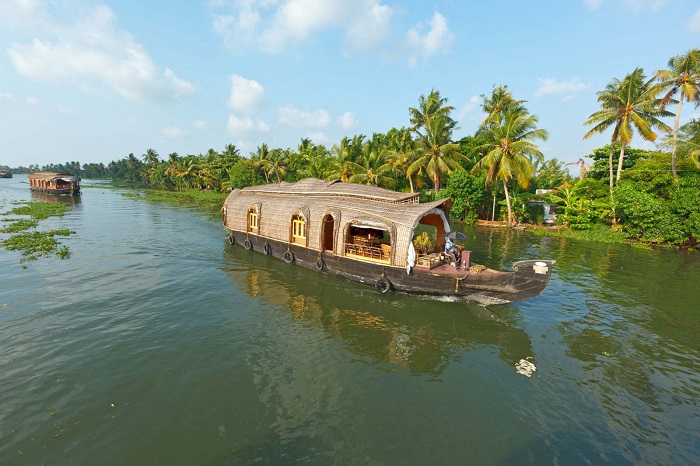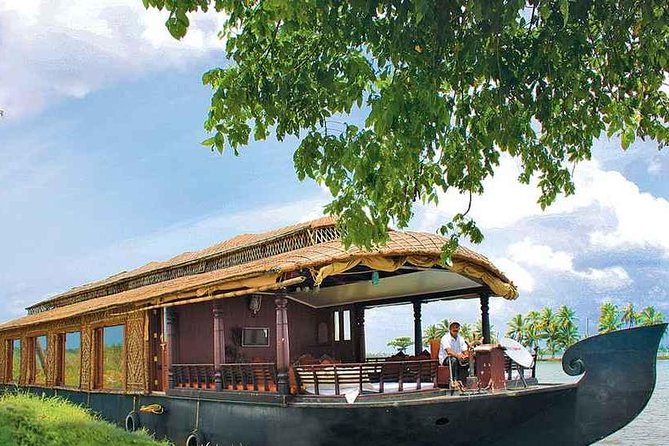Onam Festival 2024– The Harvest Festival of Kerala
Onam, the biggest cultural festival of Kerala is a spectacle to watch. God’s Own Country turns into a riot of colours and evokes euphoria. It is a harvest festival and marks the annual visit of the mythical king Mahabali who was the ruler of ancient Kerala. The celebration spans across 10 days and grandeur should be expected.
Onam gives a valuable insight into the rich history and diverse culture of Kerala. The festival gives an opportunity to reconnect with friends and family. Keralites celebrate the festivities with extravagant flower decorations, boat races, traditional song and dance as well as elaborate vegetarian meals.

Date and Location of Onam Celebration
The much-awaited Onam festival is held every year in August or September. And according to the Malayalam calendar, it falls in the month of Chingam. This year it is on 30th August - 8th September 2022. The 10-day celebration grips everyone with the festive vibe and engraves a happy frame in the mind.
- In 2024, Onam Festival will begin on 5th Sep and ends on 17th September.
- In 2021, Onam Festival will begin on 21st August and ends on 1st September.
- In 2020, Onam Festival began on 22nd August and ends on 2nd September.
- In 2019, Onam Fetival began on 1st September and ends on 13th September.
It is the state’s national festival and is celebrated with great enthusiasm in entire Kerala. Nowhere is the celebration grander than at the Thrikkakara Vamanamoorthy Temple near Kochi. It is dedicated to Lord Vishnu’s Vamana avatar and is one of the most important Vishnu temples in Southern India. The snake boat race in Aranmula is a major attraction during Onam. Even Thrippunithura in Ernakulam hosts numerous cultural events and is the perfect place to witness the festivities in its full glory.
Suggested Tour : 5 Days - Kerala Backwater
History of Onam Festival
The history of Onam goes back to the Bhagavata Purana, a sacred text that depicts the story of the demon King Mahabali. Although he was a demon, he was extremely generous and virtuous. Everyone in his land was joyful and satisfied. During his reign, Kerala reached heights of prosperity. Mahabali’s fame and popularity became a matter of concern for the gods and they turned to Lord Vishnu for help.
Lord Vishnu took on the Vamana Avatar. He disguised himself as a poor dwarf Brahmin priest and appeared in front of the king. The Brahmin requested three paces of land and Mahabali was kind enough to grant his request. Lord Vishnu took a gigantic form and in the first two steps covered the earth and heaven. Mahabali was pleased to see the lord and offered his head for the final step. Lord Vishnu blessed him with immortality and allowed him to return to his homeland every year to see his people.
The day when the great Mahabali visits Kerala, it is celebrated as Onam. The festival pays homage to the legendary king and is celebrated with aristocratic opulence.
Suggested Tour : 7 Days - Kerala Houseboat
Also Read : 10 Most Popular Festivals of South India
How Kerala Celebrates Onam Festival in 10 Days?
Day 1: Atham
On the Atham day, Keralites take an early bath and offer prayer in the temple. It is said that King Mahabali starts the preparation to come down to Kerala. Men gather the flowers and women make the pookkalam to welcome the legendary king. On this day the pookkalam is small in size and known as Athapoo. The size will keep on increasing until the final day. The design will be simple and only yellow flowers can be used.
Day 2: Chithira
On the second day, new flowers are added to the pookkalam and as usual, men gather flowers for the women. The planning for the festival finally begins on Chithira so that nothing remains undone.
Day 3: Chodhi
Another layer is added to the Pookalam on this day. Finally, the family starts buying new clothes and jewellery for each other. The markets are crowded with the local people as they get busy with Onam shopping.
Day 4: Vishakam
Vishakam marks the beginning of the main meal known as Onam Sadhya. Malayalis take much pride in this elaborate lunch and each of the family members contributes something or the other.
Day 5: Anizham
On this day, the traditional snake boat race takes place along the Pampa River at Aranmula. The event is popularly known as Vallamkali.
Day 6: Thriketa
On the sixth day, people who have migrated to other regions visit their ancestral homes to celebrate the festivity with their dear ones. They also exchange gifts with one another.
Day 7: Moolam
Not only the families visit each other but the Hindu temples in Kerala start serving vegetarian meals (special sadhyas). Various traditional dance performances including the Puli Kali takes place on this day.
Day 8: Pooradam
The small idols of Vamana and Mahabali are placed in the middle of the pookkalam. On this day, Mahabali is invited and greeted by the people. Now the figurine will be called the Onathappan. With so many layers added, the design of the pookalam gets bigger and beautiful.
Day 9: Uthradam
On the Uthradam day, gala feasts are arranged. It is considered the best day to buy fruits and vegetables. According to ancient myth, the king will tour his kingdom and bless the people.
Day 10: Thiruvonam
Thiruvonam is the final day when people clean the houses and as a welcome sign apply rice water mix at the entrance. The eldest woman of the family distributes new clothes to the family members. In the afternoon special games are organized mostly in the rural areas. The evening is celebrated with bright lights and firecrackers. In some parts of Kerala people engage in folk music and dances as well.
Also Read : Cochin Carnival 2019 – The New Year Celebration in Kerala
Kerala Travel Information :
- History of Kerala
- Kerala Fast Facts
- Culture of Kerala
- Top Reasons to Visit Kerala
- Shopping in Kerala
- Fairs and Festivals in Kerala
Tourist Attractions in Onam Festival
Onam is a huge deal for the Malayalis and they come together to celebrate the 10-day long festival. What started as a harvest festival has now evolved into a massive religious and cultural event with endless celebrations across Kerala and even outside. The rituals also contribute to the charm of the festival. Onam invites travellers who are eager to sink in the cultural pleasure of God’s Own Country.
Here is a list of tourist attractions covering celebrations, practices and rituals that adds to the vibrancy of the festival.
1. Athachamayam
Athachamayam is the first day of the Onam festival. It is a cultural fiesta and begins with a splendid procession at the royal town of Tripunithura. It is the place where the erstwhile king was banished from the planet.
The day witnesses legendary ceremony and a street parade that features marching elephants, music, drum beats, traditional art forms and people dressed in colourful attire. Historically, on this day the Kochi Maharaja used to march from Tripunithura to Vamanamoorthy Temple while meeting the citizens. Currently, the ceremonial procession is supported by the Government.

Suggested Tour : 10 Days - Best of Kerala Tour
2. Pookalam
The flower carpets popularly known as Pookalam marks the onset of Onam. It is considered auspicious and plays a major role in the celebration. They look like flower beds and are beautifully made at the entrances of the house on the Atham day. On the first day, the size of the Pookalam is smaller and it starts growing bigger with every passing day. Figurines of Vamana and Mahabali are also installed at the gates.
There is a common belief that the pookalam is the symbolic representation of the fights between the gods and the demons. It is usually made by the women of the house with an artistic blend and touch. On the Pooradam day, the Onathappan statue is placed in the middle of the pookalam. It is a religious art and quite similar to rangoli made with bright colours in the Northern Parts of India.

Suggested Tour : 11 Days - Kerala Village Tour
3. Folk Music and Dances
The carnival also features folk music that showcases the essence of Kerala. Kathakali is the most popular dance form of Kerala and is performed by professional dancers depicting scenes from the Hindu mythology. You will get to witness this classical dance in Kovalam, Shornur and Cheruthuruthy.
In Thrissur the celebration is enticing and there is a procession of decorated elephants enclosed by Kummattikali dancers. The dancers wear colourful masks and go from one house to the other and perform the dance.

Suggested Tour : 8 Days - Kerala Backwater Tour
Another traditional dance form is the Thiruvathirakali, where the women perform by circling around an illuminating lamp.

Thiruvathirakali Dance Perform by Woman
Also Read : Know About the Traditional Dances of Kerala
Suggsted Tour : 15 Days - Kerala Tour
Pulikali is a common sight during the season of Onam. The dancers are painted in yellow and black and resemble a tiger. They dance to the tune of thakil and chedna. This folk dance mainly takes place in Thrissur and draw visitors from every corner of the state.

The ritual dance known as Theyyam is also performed during the festival. Every day during Onam, the Thrikkakara Temple witness’ one or more of these dance forms. Most of the commercial capitals especially of Kochi, Thiruvananthapuram and Kozhikode are gorgeously lit and the festivities are celebrated with a spectacular display of fireworks.

Also Read : 13 Most Popular Folk Music and Dance of Rajasthan
4. Vallamkali
Vallamkali, the traditional snake boat race is rooted in the Kerala culture and is the highlight of the Onam festival. It is a special rowing event that is dedicated to Lord Krishna. The massive boats comprise of 100 rowing men and a few helmsmen. The event takes place on the sacred River Pampa. Visitors from far and near come here to watch the snake boat racing. Popular races are the Nehru Trophy Boat Race and the Uthrattathi Boat Race.

Read More : Top Backwater Destinations in Kerala
Also Read : Monsoon Exclusive: Snake Boat Races, Kerala
5. Onam Sadhya
The Onam Sadhya is a scrumptious multi-course meal with all kinds of vegetarian dishes and is served on the last day of Onam. This elaborate preparation is served on a banana leaf and eaten during the lunch. A minimum of 11 to 12 dishes are prepared and make an intimidating sight. The Onam Sadhya is incomplete without the red or the brown rice.
Other preparations include Pappadam, Avial, Olan, Kaalan, Thoran Mezhukkupuratti and Dal along with ghee. Rasam, Puliseri, Kichadi, Pachadi, Pickles, coconut chutney and buttermilk are also made. Finally, the grand feat ends with a delectable dessert known as Payasam. All the curries are served with rice preferred in Kerala. In the temples, you can expect up to 30 dishes.

Also Read : What to Eat in Kerala
6. Post-Onam Ritual
Onam finally ends with Thiruvonam. However, the two days following this celebration marks the departure of the legendary King Mahabali to heaven. After these 10 days, the Onathappan statue that was placed in the pookkalam is immersed in the river. After the ritual, the pookkalam is removed.
7. Other Customs
The Keralites buy new clothes during this time of the year and this tradition is called Onakkodi. A Palmyra tree is burnt to ashes that signify Mahabali’s sacrifice. Even the temples in Kerala are lit with lamps during this occasion. Handloom fairs in the rural regions form the core of Onam festivity. Other celebration includes ox races, Pookalam and food-eating competitions. Onam is celebrated worldwide especially in Singapore, USA and the United Arab Emirates.
Also Read : Top 7 Water Activities Kerala is Famous For!
Kerala Travel Guide :
How To Reach Kerala
By Flight: Kerala boasts three major international airports namely Thiruvananthapuram Airport in the south, Kochi Airport in the central and Calicut Airport in the north. All these airports are well connected to India as well as different international cities.
By Train: Kerala is interconnected to all major Indian destinations by railway. Direct trains operate daily from Kerala to other big cities like Bangalore, Chennai, Mumbai, Kolkata and Delhi.
By Road: There are three highways namely NH 17, 47 and 49 that connects Kerala to the rest of the country. There are private as well as government-owned buses that run from Kerala to all other parts in the country.
By Sea: Kerala has a port and the ships venture to the well known Lakshadweep Island. From the Kerala port, there are various modes of transportation to move around the city.











